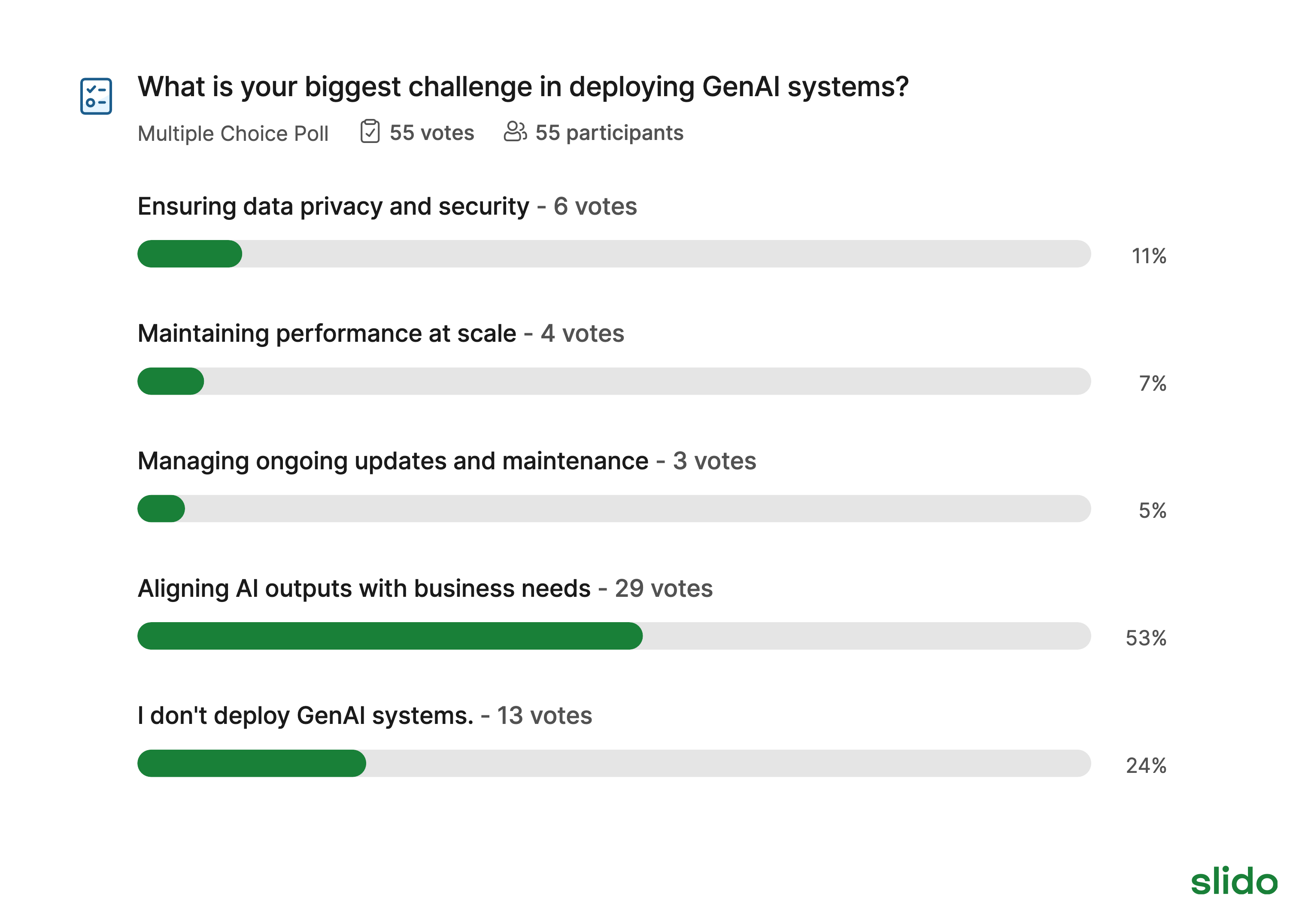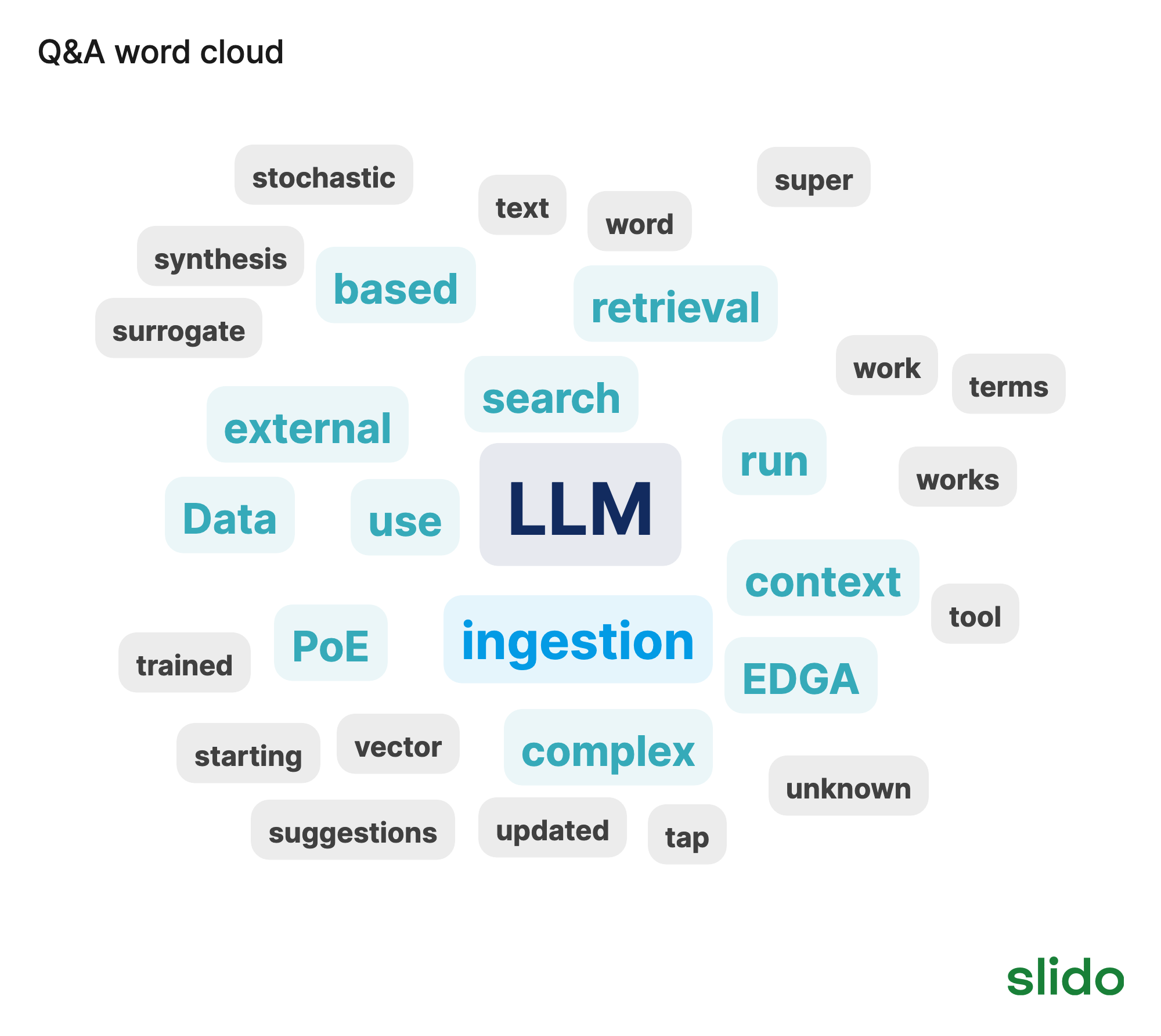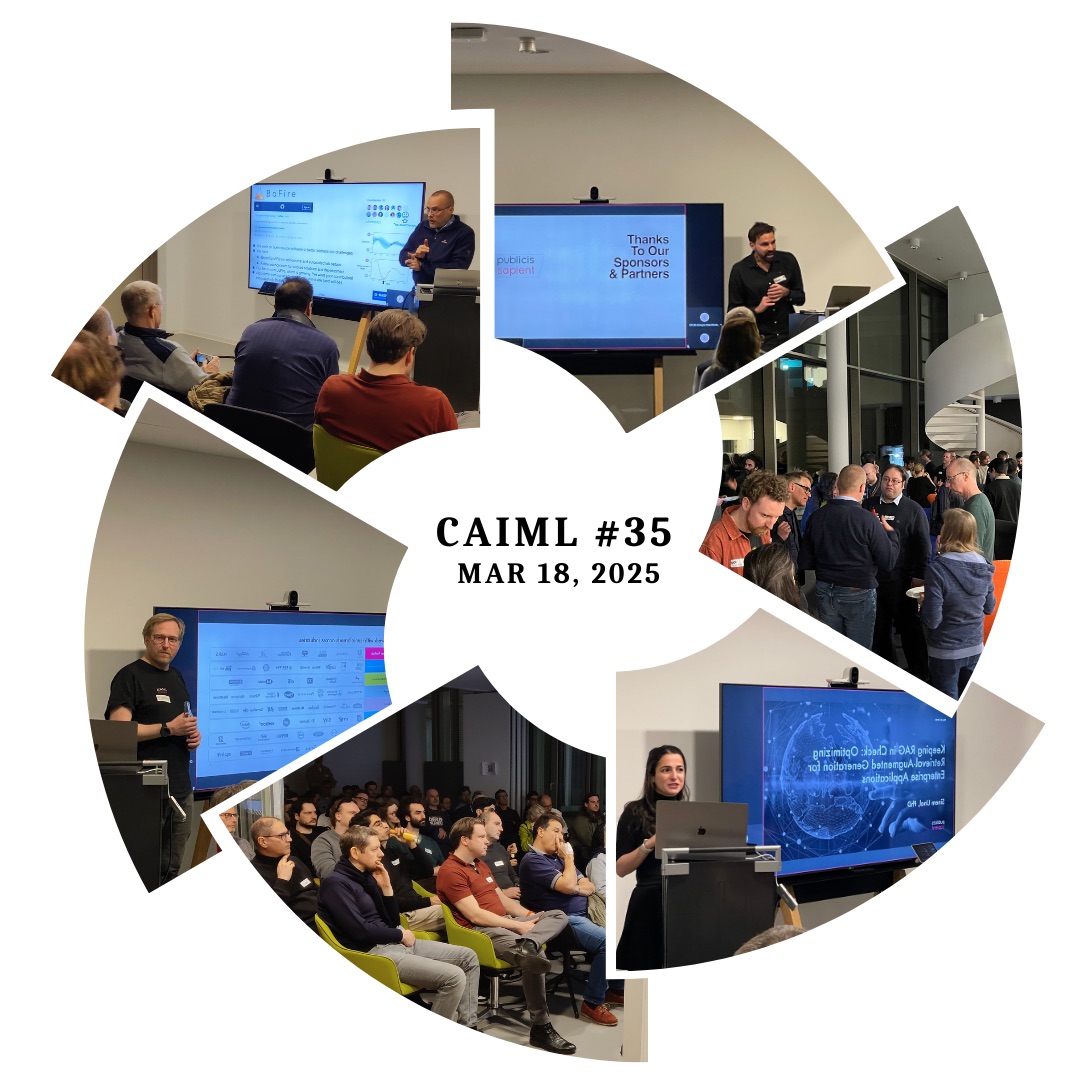CAIML #35
CAIML #35 happened on March 18, 2025, at Publicis Sapient.
Agenda
18h30 Open Doors
19h00 Welcome & Intro


19h15 Sinem Unal (Senior Associate Data Science at Publicis Sapient) - Keeping RAG in Check: Optimizing Retrieval-Augmented Generation for Enterprise Applications
RAG architecture has proven its effectiveness in various GenAI applications. While setting up a generic one is relatively straightforward with current tools and technologies, optimizing it for specific business needs is a different challenge. In this talk, we will explore some design considerations to have a performant RAG in production, including evaluation, quality and latency trade-offs, and scalability. We will also address critical aspects such as ongoing maintenance, security/privacy. Join us as we dive into the full lifecycle of a RAG system and share insights on how to successfully sustain it in enterprise settings.
19h50 Hergen Schultze (Head of Data Analytics at BASF) - Mathematical optimization and open source software development to create autonomous research machines
Optimization of reaction conditions has a long history in chemical industry. While progress was originally based on random discoveries and the intuition of chemists, in the last century we developed techniques and statistical methods for process optimization. Now, we are taking the next step, using artificial intelligence to automate and accelerate reaction optimization, not least to better address the major chemical industry challenges such as CO2 management and the transformation of energy and raw materials. We believe that all significant decisions in R&D should be driven by evidence, that means by well designed, executed, and analyzed experiments. To accelerate this process we create machines, that “close the loop” for autonomous research and development. Such a machine is basically a fully automized lab setup. It is controlled by a lab management and execution software, which is orchestrated by a higher-level (Bayesian) optimization algorithm. The context and goals are set by the scientist, but the augmentation by generative large language models is perceivable and currently under development (stay tuned for recent news at the event). Whereas academic groups focus on proving the principle for new technologies and applications, we in industry focus on establishing the technologies in a reliable way. For the digital level of the autonomous research machine, we collaborate with external partners on open-source algorithm development [1]. We provide the capabilities internally as digital products, that means the optimization functionality is readily available and maintained long-term by an internal team [2]. For a certain application, these capabilities are coupled with a professional lab execution system. If time permits, we can discuss the experimental lab set-up as well.
20h20 Networking with food and drinks provided by Publicis Sapient
